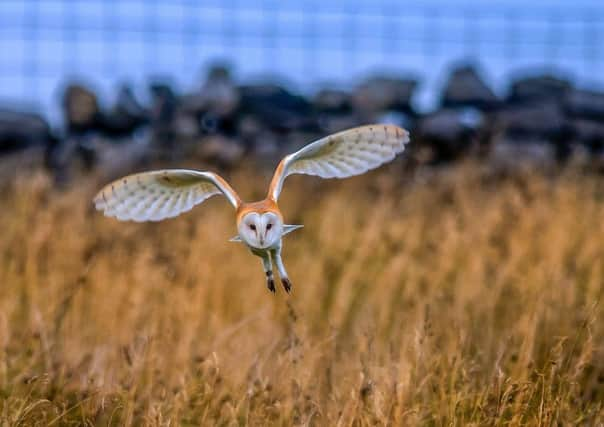Barn owl on the hunt in the Yorkshire countryside - a sight to make hearts soar


This particularly owl was caught on camera amongst the long meadow grass in Grassington, North Yorkshire.
Barn owls were once a common sight in the UK but have undergone a major population decline since the 1930s, with much of this attributed to the widespread use of organochlorine pesticides in the 1950s and 1960s, as well as the loss of suitable nesting sites in more recent years.
Advertisement
Hide AdAdvertisement
Hide AdAs a largely nocturnal bird, the precise numbers in the UK are not known but the most comprehensive recent survey back in the 1990s estimated the population at almost 4,000 breeding pairs.
Barn owls are now a protected species under the Wildlife and Countryside Act as part of the efforts to maintain their population in the wild.
In the 2000s, a University of York project resulted in new recommendations being made for improving conservation by creating suitable habitats for them in different environments such as arable, pastoral and mixed agricultural areas.
Yorkshire is a good place to spot barn owls, with the RSPB recommending the Bempton Cliffs reserve near Bridlington and the Old Moor nature reserve in the Dearne Valley as locations where they can be seen.
Advertisement
Hide AdAdvertisement
Hide AdBut barn owls can also be seen in open country, along field edges, riverbanks and roadside verges – with dusk typically the most likely time of day to be able to spot them as they go out on the hunt for prey, which typically includes short-tailed voles, wood mice and brown rats.
A spokesman for the RSPB adds: “Barn owls usually choose to nest in holes in trees, or undisturbed buildings such as barns and outbuildings, ruins and, in some areas, mines, cliffs and quarries.”
Wherever they are seen, there is little doubt that sightings of the much-loved species will brighten the day – or more likely the evening – of anyone fortunate enough to come across them.
Technical information: Nikon D5 camera with a Nikon 300m lens plus x2 teleconverter, exposure of 1/1000th sec @ f5.6, ISO 640.